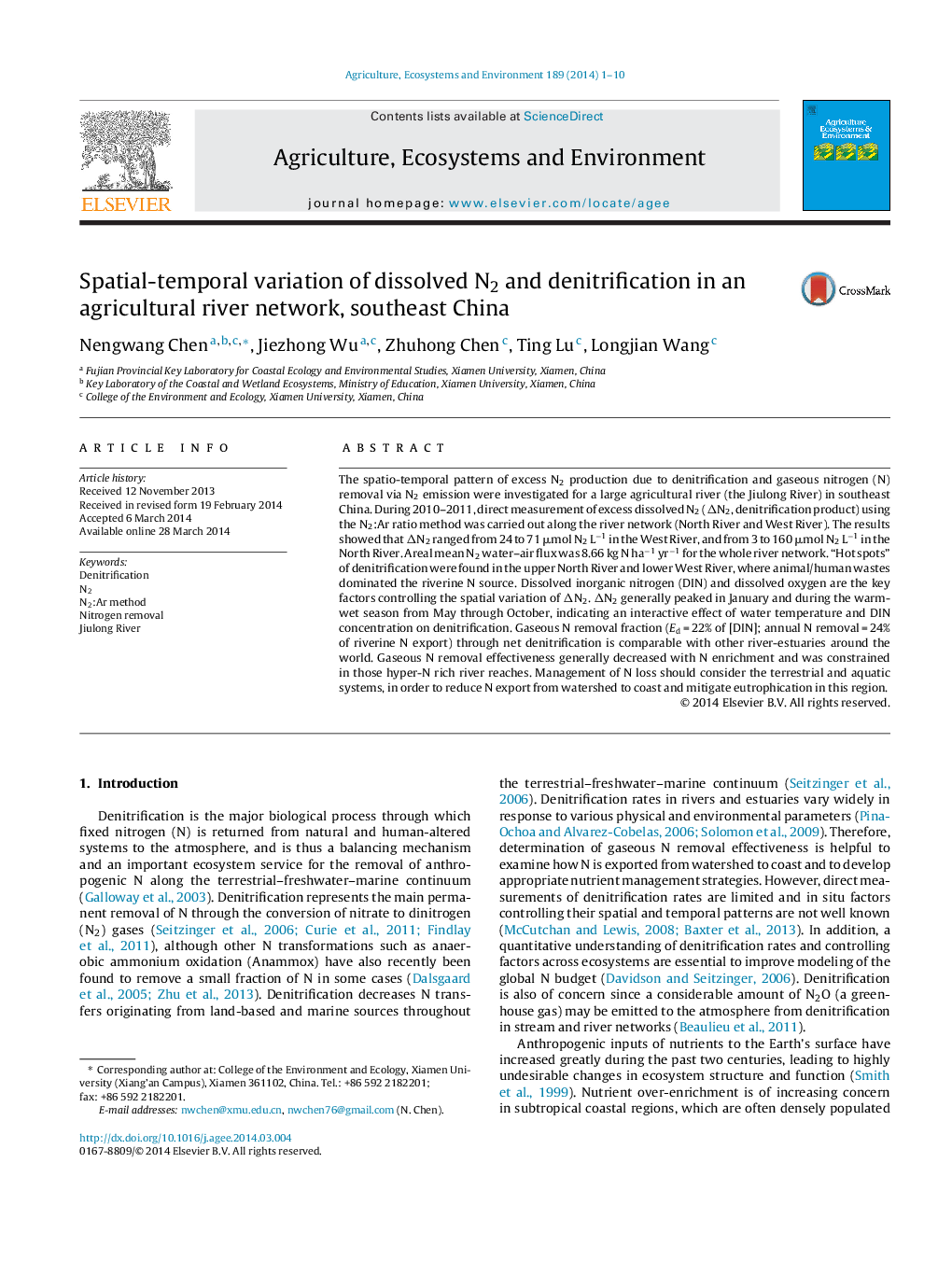| Article ID | Journal | Published Year | Pages | File Type |
|---|---|---|---|---|
| 2414032 | Agriculture, Ecosystems & Environment | 2014 | 10 Pages |
•Strong spatio-temporal variation of denitrification exist in an agricultural river system.•Hot spots of denitrification were found in animal/human wastes dominated rivers.•DIN concentration and DO influence the spatial variation of denitrification.•Seasonal dynamic of denitrification was linked to temperature and nitrogen concentration.•Over 20% DIN can be removed by denitrification but constrained in hyper-N rich rivers.
The spatio-temporal pattern of excess N2 production due to denitrification and gaseous nitrogen (N) removal via N2 emission were investigated for a large agricultural river (the Jiulong River) in southeast China. During 2010–2011, direct measurement of excess dissolved N2 (ΔN2, denitrification product) using the N2:Ar ratio method was carried out along the river network (North River and West River). The results showed that ΔN2 ranged from 24 to 71 μmol N2 L−1 in the West River, and from 3 to 160 μmol N2 L−1 in the North River. Areal mean N2 water–air flux was 8.66 kg N ha−1 yr−1 for the whole river network. “Hot spots” of denitrification were found in the upper North River and lower West River, where animal/human wastes dominated the riverine N source. Dissolved inorganic nitrogen (DIN) and dissolved oxygen are the key factors controlling the spatial variation of ΔN2. ΔN2 generally peaked in January and during the warm-wet season from May through October, indicating an interactive effect of water temperature and DIN concentration on denitrification. Gaseous N removal fraction (Ed = 22% of [DIN]; annual N removal = 24% of riverine N export) through net denitrification is comparable with other river-estuaries around the world. Gaseous N removal effectiveness generally decreased with N enrichment and was constrained in those hyper-N rich river reaches. Management of N loss should consider the terrestrial and aquatic systems, in order to reduce N export from watershed to coast and mitigate eutrophication in this region.
